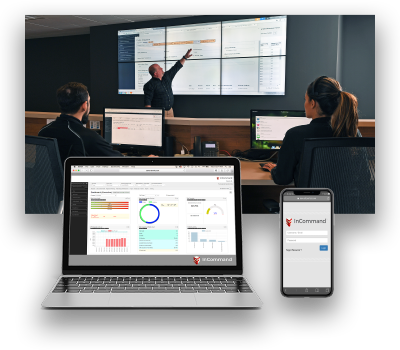Dave Shuman, Industry Leader in Mobility, IoT, and Manufacturing, Cloudera
In 2019, security and governance must be the focus of organizations to ensure the safety and efficacy of edge devices, models, and data. There are too many vulnerabilities and gaps in the security posture for IoT devices — organizations must take a proactive approach to securing devices and data, using metadata and device logs, and treating IoT devices like any other network device to predict and accurately respond based on the available signals. Building on the early successes, we will see enterprises adopting a portfolio approach to building ML applications in manufacturing and industrial sectors as well as smart cities and homes.
Gwen Shapira, Data Architect, Confluent
One way to look at IoT is to think about devices and sensors, and another way is to look at it as a huge distributed data management problem. Data is generated in large volumes on every single device. IoT developers need to figure out what to collect, how to collect it efficiently, how to use it for analysis and model-training, what information to send back to devices, and how to do this efficiently. Few companies have all the capabilities to do this easily, so there is a huge market opportunity. Cloud vendors have well-integrated offerings, but I expect to see a large ecosystem of startups creating more innovative specialized solutions.
Anand Janefalkar, CEO and Founder, UJET
Blending of different technologies in cloud computing space is going to continue and accelerate. In the computing cloud space, we’re seeing a trend of companies integrating their technology with devices like Alexa and Google Home that consumers speak into. We see brands, solutions providers, and devices coming together, and this will evolve faster and faster. Unless communications solutions providers fully leverage new capabilities and services, they’re not going to be in the forefront very long.
Tomer Weingarten, CEO, SentinelOne
Today’s threat landscape is more complex than ever before: any device that cannot be covered by protection software becomes the weakest link — a point of entry for an attacker — and reduces the security posture for the entire enterprise. With IoT devices jumping from thousands to millions within enterprises, organizations are far more exposed than they know. In addition to IoT, true cybersecurity must expand to include Linux, Mac, containers, and cloud in a serious fashion. Together, these are the challenges organizations should be solved within their 2019 agendas.
Yaron Kassner, CTO, Silverfort
As more IoT devices are being connected into our business environment, we can expect more security breaches that leverage these devices. IoT security will become an important initiative. We will see an increase in standardization, specification, reference architectures, and best practice guidelines for IoT security.
Tom DeSot, EVP and CIO, Digital Defense, Inc.
Security will become a key driver in 2019, with breaches taking place at a more rapid pace than ever when it comes to IoT implementations. Businesses will be expected to implement IoT in just as a secure fashion as workstations and servers.
Lior Netzer, Mobile and IoT CTO, Akamai
IoT data will become a business-critical resource in 2019. As the enterprise increasingly adopts IoT devices and sensors, the volume of data generated by these devices and sensors increases, too, providing a trove of valuable insights. At the same time, machine learning and artificial intelligence-driven data analytics will continue to mature, meaning IoT data analysis will become easier. Through a collaborative and multidisciplinary effort, businesses will be able to glean deeper insight from their connected data, (such as cross-correlating inputs from discrete sensors for better decision making), ultimately leading to smarter business decisions.
The potential for an “IoT Doomsday” breach will keep security and data privacy front and center. In the wake of GDPR and as the cyber threat landscape continues to evolve with volatility, protecting all devices and data — including IoT — will be top of mind for businesses. We’ve already seen IoT breaches and vulnerabilities hit the headlines within the last few years, like the Mirai botnet DDoS attack against routers and a Wi-Fi heart monitor for babies left unencrypted. In the case of connected devices, a doomsday-type breach could very well be a matter of life and death. As businesses race to stay ahead of the game in protecting and managing stored data and consumer security awareness and skepticism continues to grow, IoT device vendors will place more direct attention to fill security gaps early on in the development process.
IoT “platform” becomes the new black, fueled by cloud providers. In 2018, Microsoft announced a four-year, $5-billion investment in building out an IoT platform. As businesses and the industry at large begin to wake up to the vast opportunity of harnessing connected devices and what their data presents, expect more investments from major tech players in the year ahead.
Erez Yalon, Head of Security Research, Checkmarx
IoT, in its current state, is not secure. There are secure devices out there, but they are the exception rather than the rule. Perhaps more concerning is that there are no revolutions in IoT security on the horizon. IoT will continue to be vulnerable in 2019.
Ambuj Kumar, Co-founder and CEO, Fortanix
More states will follow the suit of California in demanding IoT devices provide “reasonable security” and privacy. IoT devices, today, have capabilities to burn houses and regulate blood-flow — it’s mind-boggling that we got this far without much regulation, but it’ll change and everyone should be thankful for that.
Andreas Pettersson, CEO at Arcules
Throughout 2018, businesses have increasingly recognized the value in the video camera as a central IoT sensor in security strategies. Embedded sensors have helped businesses, governments, and individuals collect data to make critical decisions about their surroundings and business practices. Looking to 2019, IoT will grow its presence as AI and analytics work closely together to make sense of data and engage in real-time security measures. More devices like access management, infrared heat, temperature control, and more will integrate into building management operations and businesses to provide deeper intelligence and insights.”
Sal Visca, CTO, Elastic Path
IoT sensors are being rolled out in large numbers as points of data collection and sensing in the physical world around us. We’re seeing increased implementation in buildings, manufacturing facilities, vehicles, streets, airports, and homes. Intelligent applications are able to use the sensor data capabilities of these devices to collect information, monitor situations, react, and take action. IoT devices take other forms such as wearables and health and medical devices. I think most people would be surprised by the sheer number of IoT devices around us and the amazing capabilities of these devices.
As more IoT smart devices are integrated into industrial applications, manufacturing, vehicles and homes, and as these devices further enable process automation, many more attack surface vectors open up. This creates new vulnerabilities, so there should be a great innovation in the security sector to create tools and systems to secure these new vulnerabilities.
I also believe machine learning and artificial intelligence will be critical to collect and understand the vast amount of data from these devices to detect issues and predict failures and attacks.”
Neil Barton, CTO, WhereScape
Over the next year, the number of companies that will harness IoT capabilities in a broader range of context will continue to expand rapidly due to technological advancements producing sensors that are smaller, cheaper and more effective. The challenge is no longer in the tech, but in the value organizations can extract from the data they collect, which can be like finding a needle in the data haystack. Now, only a year away from Gartner’s prediction that there will be 20 billion internet-connected things online by 2020, there will be a data revolution as IT teams look to incorporate these new data sources into existing analytics environments and make insights quickly and easily accessible to the business.
Due to the sheer volume of connected devices to become the norm in 2019, the only realistic solution is to embrace automation to ingest, transform and deliver real-time data and insight in a way that the business can use. Data automation can ensure that IT teams, whether old or new to working with streaming data, can absorb the astronomical volume of data on the horizon and be in a position to leverage its insights quickly.
Scott Parker, Director of Product Marketing, Sinequa
I believe IoT is still in its nascent state, but with 2019 comes real progress. As sensors and actuators becoming increasingly integrated with related systems of information and engagement, intelligent personalization will follow. For example, when you tell your home AC to start up an hour before you get home from work, the system is going to follow that command whether it’s a holiday or you’re traveling. A smarter version would check your calendar or maybe even your current location to adjust accordingly. 2019 promises a significant increase in the use of context for IoT that will provide the intelligence for a more personalized user experience.
Stephen Gailey, Solutions Architect, Exabeam
2019 will see a continuation and probable acceleration of the Internet of Things (IoT) trend, with more devices becoming smart and getting connectivity. This inevitably will see more hacks and more botnets of previously inert decades. Artificial Intelligence (AI) turning on humankind is likely to be led by fridges and smart doorbells, rather than by Cyberdyne Systems’ Hunter Killers! The challenge here is that vendors relatively new to Internet-based systems have no history of having to build in security. The UK government adding voluntary codes is unlikely to do much to improve the situation, so 2019 will certainly see an escalation in attacks. These will start by controlling single function technology, either individually as a point of entry, or as part of huge botnets that are then used against third parties.
Michael Payne, Product Team Lead, Aquicore
IoT will continue to replace front-end interfaces with the many facets of automatic detection and consumption via technologies, like Bluetooth, voice recognition, beacons, and a variety of custom protocols and sensors.
Hans O’Sullivan, CEO, StorMagic
Autonomous Vehicles could rebrand as “Data Cars.” We expect autonomous vehicles to generate a staggering 1-2 TB of data per car, per day. As more of these vehicles hit the road, the data will become immense and storage becomes vital.
Nicole Segerer, Director of Product Marketing, Flexera
“Enterprise and Industrial IoT companies will start analyzing and improving their customer experience to deliver on their goal of high renewal rates as they move to recurring revenue models. They’ll invest in self-service, automated processes for software delivery and updates and more flexible and agile processes to change device capability and capacity on demand.”
Alejandro Lavie, Director of Security Strategy, Flexera
2019 will be a year where IoT will be weaponized to attack major infrastructure and governments and cause disruption for citizens. The danger’s been present for a while, and reports suggest that rogue actors and nation states have infiltrated key systems and are waiting to be activated at the right time to cause disruption.










